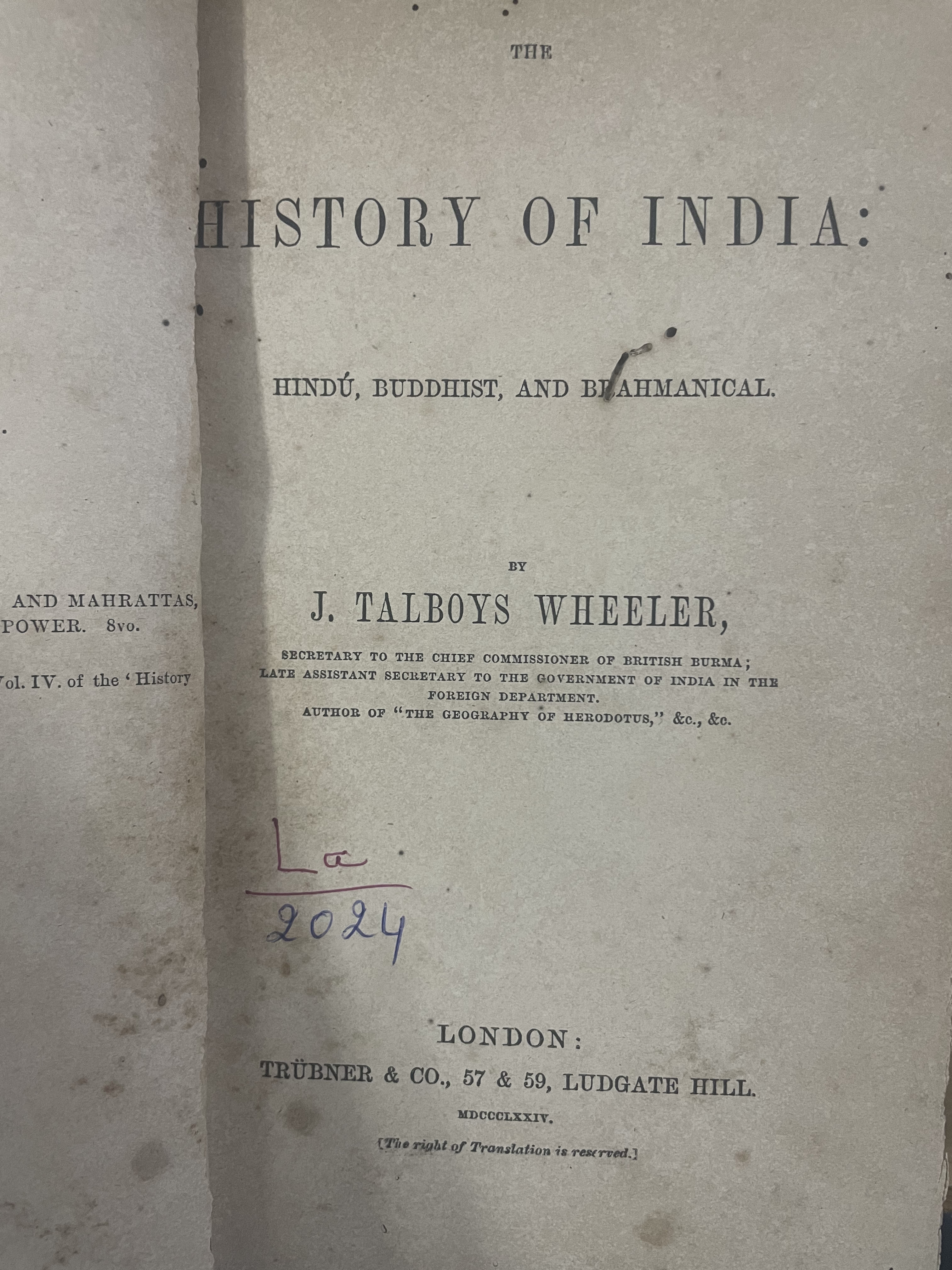The History of India

About
Summary
Exquisite
TOC
Details
Related
URL
Images
Overview
S. N. Narahari Aiyar's The History of India is a comprehensive account of India's history, culture, and society. Published during the early 20th century, this book serves as a significant source for understanding India's past, from ancient times to the colonial period. The work is notable for its rigorous analysis, scholarly approach, and its attempt to present India's history in a coherent and accessible manner, covering key political, social, cultural, and economic developments. It presents India's history through a detailed examination of dynastic rules, religious movements, cultural milestones, and interactions with foreign powers.
Importance of Book
Comprehensive Coverage: Aiyar’s work is a pioneering attempt to present the vast and complex history of India in a single volume. It covers not only the political history but also cultural, economic, and social aspects, making it a well-rounded historical text.Emphasis on Indian Perspectives: Aiyar's work seeks to approach Indian history from a perspective that is inherently Indian, as opposed to the Eurocentric view that dominated many historical writings at the time. This was significant in the context of colonial India, where British historians often portrayed Indian history as one of stagnation and decline.Cultural and Intellectual Contributions: The book pays particular attention to India’s cultural and intellectual contributions, highlighting the achievements in art, literature, science, and philosophy. By doing so, Aiyar helped showcase India’s rich heritage, which was often downplayed by colonial historiography.Historical Accuracy and Objectivity: Aiyar’s scholarship is rooted in the use of primary sources, and he endeavors to be as objective as possible while discussing the diverse events and figures that shaped India’s history. This has made it an important text for students, scholars, and general readers alike.
Key Themes
Political Evolution and Dynastic Rule: One of the major themes of the book is the political evolution of India, with a focus on the rise and fall of various dynasties. Aiyar examines how political power shifted over time and how different rulers shaped the subcontinent.Religious and Cultural Syncretism: The book also emphasizes the cultural exchanges between Hinduism, Islam, and other religious traditions. The theme of religious syncretism is particularly explored during the Mughal period, where the fusion of Islamic and Hindu traditions led to new forms of art, architecture, and societal norms.Colonialism and Resistance: Aiyar explores the impact of colonialism on India, with a particular focus on the British Empire’s influence. He also discusses the various resistance movements, highlighting the struggles for independence that were eventually instrumental in ending British rule.Social and Economic Change: Aiyar addresses the social and economic changes that India underwent, from the transition of feudal systems to more centralized forms of governance, the impact of trade, and the growth of new economic systems under colonial rule.
Cultural Significance
Aiyar’s The History of India holds immense cultural significance for India, especially in the context of the country’s intellectual renaissance during the late 19th and early 20th centuries. During this period, there was a growing nationalist sentiment that sought to reclaim and preserve Indian heritage in the face of British colonial domination. The book contributed to this intellectual movement by offering a narrative of Indian history that was not only factual but also culturally affirming.It also influenced future generations of historians and scholars, providing a foundation for modern historical research on India. Aiyar’s work helped to dispel the myths about India’s supposed cultural backwardness and instead highlighted the continuous development of Indian civilization across millennia.
Effects on Society
S. N. Narahari Aiyar’s work was important in shaping the historical consciousness of Indian society. In the pre-independence era, when many Indian leaders and intellectuals were challenging the colonial narrative, Aiyar’s book provided an essential reference for understanding India’s past in its full complexity.It also contributed to the broader nationalist movement by emphasizing the continuity and resilience of Indian civilization in the face of foreign invasions and colonial exploitation. The book played a role in helping Indians reconnect with their history and assert their cultural identity.In post-independence India, the book continued to be influential, particularly in educational settings, where it was used to educate young Indians about their past and to inspire pride in the country’s rich heritage.
Conclusion
S. N. Narahari Aiyar’s The History of India is a crucial work in the historiography of India. Its broad scope, scholarly approach, and emphasis on India’s cultural richness made it a cornerstone of historical literature during the colonial period. By highlighting the political, cultural, and economic developments throughout India’s long history, the book helped foster a sense of pride and identity for Indians in an era marked by foreign domination. The book’s cultural significance, its thematic focus on political evolution, religious syncretism, colonial resistance, and social change, and its effect on the intellectual landscape of India cannot be overstated. It continues to be an essential work for anyone interested in understanding India’s past and the forces that shaped its present.
Title
The History of India
Author
S N Naraharayya
Name of Publisher
Ram Dayal Agarwal Allahabad
Publish Date
1912
Subject
Historical themes and periods emphasized during that time
Vintage
1901-1947
Number of Pages
148
Category
History
Sub Category
India
Rarity
RARE
